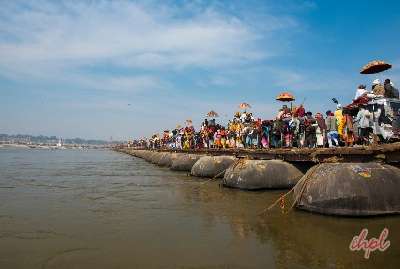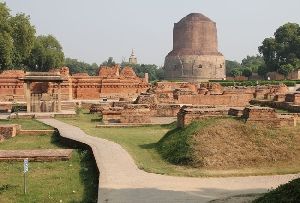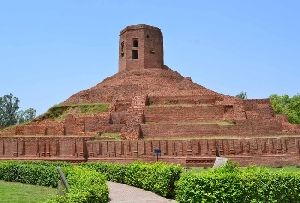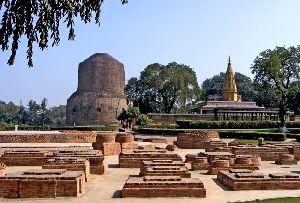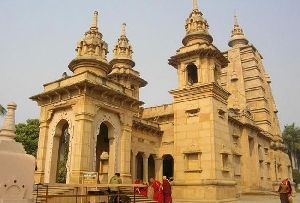Heralded as one of the holiest sites for Buddhist pilgrimage in India, Sarnath in Uttar Pradesh is the site where Lord Buddha had delivered his first sermon after attaining enlightenment. Home to some of the most extensive ruins amongst sacred Buddhist sites, Sarnath houses several stupas, excavated ruins of age old monasteries, temples, museums, gardens and various other interesting sites. Prominent among the tourist attractions of Sarnath, the Archeological Museum Sarnath is the most important among the Museums in Sarnath.
A museum worth visit while on tour to Uttar Pradesh, Archeological Museum Sarnath is the oldest site museum of the Archaeological Survey of India. The museum displays some of the finest embodiments of Buddhist art.
History :
A town that showcases the most extensive ruins amongst Buddhist destinations, Sarnath boasts of a rich and interesting history dating back to 528 B.C. It is here at the Deer Park in Sarnath that the Buddha preached his first discourse after he attained enlightenment at Bodh Gaya.
Sarnath was ransacked by Turkish Muslims towards the end of the 12th century. The site has been lying in ruins since then. Sarnath houses a rich and amazing collection of sculptures, artifacts and edifices that comprise of numerous Buddha and Bodhisattva images besides other ancient relics. To store and display all such findings and excavations at Sarnath, the government took a decision in 1904, to erect a site museum adjoining the excavated site at Sarnath. Thus was set up the Archaeological Survey of India in 1910 to preserve, display and study the antiquities in the best possible way.
The oldest site museum of the Archaeological Survey of India, the Archeological Museum Sarnath exhibits an invaluable collection of Buddhist sculptures, heralded among the finest embodiments of Buddhist art.
Checkout: Agra Tour Packages, Lucknow Tour Packages, Mathura Tour Packages, Uttar Pradesh Tour Packages, Varanasi Tour Packages
Description :
The Archeological Museum in Sarnath Uttar Pradesh displays antiquities excavated from the ruins at Deer Park – the site where the Buddha had delivered his first preaching. There are five galleries and two verandahs at the museum to display the antiquities dating back to 3rd-12th century B.C.
The four most important sculptures exhibited at Archeological Museum Sarnath include the Lion Capital, Preaching Buddha Image, Colossal Bodhisatta Image and Buddha’s Life Panels.
The most exquisite specimen of Mauryan sculpture – the Lion Capital once topped the Ashoka Pillar at Deer Park Sarnath. A prized possession of the Archeological Museum Sarnath today, this glistening sandstone capital depicts four lions sitting back to back on a circular abacus. The abacus shows four running animals – bull, elephant, horse and lion. The Lion Capital is now the National Emblem of India.
Buddha’s Life Panels comprise two sculptured panels, one showing the four major events in the Buddha’s life – Birth, Enlightenment, First Sermon and Mahaparinibbana. Another panel depicts the eight major events in Buddha’s life.
The Colossal Bodhisatta Image displayed at Archeological Museum Sarnath is a magnificent red sandstone sculpture donated by the bhikkhu Bala in 81 A.D.
The Preaching Buddha Image shows the Buddha seated in a preaching posture, with a halo around his head.




